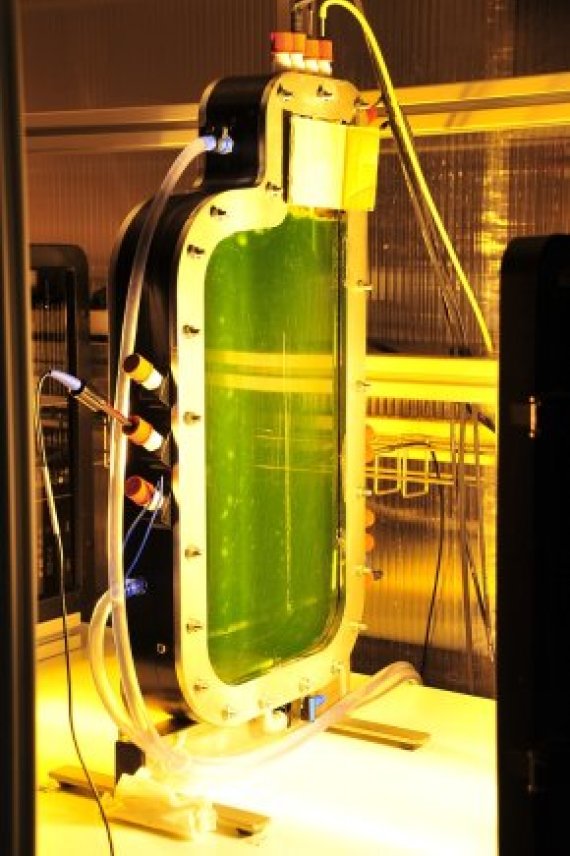Human urine is full of nitrogen, phosphate and organic compounds. While these are great components for algae, up to now no-one had succeeded in cultivating algae using undiluted urine. Initially the Wageningen researchers were also faced with a puzzle. ‘It was difficult to cultivate the algae,’ says research supervisor Hardy Temmink from Environmental Technology. ‘They seemed to be growing on male but not on female urine.’
The researchers thought hormones (the pill) might be causing the algae problems but that turned out not to be the case. The female urine had been stored for a few days and had a lack of magnesium as a result. The problem was solved by adding some magnesium.
With this information, Kanjana Tuantet, a PhD student from Thailand, managed to break down undiluted urine using algae for the first time, as the scientists reported this month in the Journal of Applied Phycology. The benefit from this approach lies in the algae production. Marcel Janssen, the second research supervisor, says you can use them to make dyes, fuels or fertilizer. The easiest option is to make fertilizer: you dry the algae and spread them on the land. They are also good for the soil structure, adds Janssen.
Continuous reactor
A prototype algae reactor has now been created in the lab, says Temmink. It is a plate reactor only half a centimetre thick because the algae, of the genus Chlorella, only grow well if they get plenty of light. In a plate reactor like this, 1 litre of urine will produce 50 grams of algae. You can also use algae pools to convert the urine but to do that, you need to dilute the urine. And that involves making clean water dirty and having to process it afterwards, according to Janssen. The researchers do not want to do that so they are working further on a closed reactor that processes urine into algae continuously (day and night).
But how can algae grow in the night if they need light? ‘Yes, that’s striking,’ says Temmink. ‘The algae turned out to carry on taking up nitrogen during the night. We think the algae are building starch reserves during the day and using this to carry on growing during the night.’ This brings the development of a continuous reactor within reach. The company DeSaH, a partner in the doctoral research, will be taking the lead in the further development of the urine reactor. The researchers think it is likely to be located in a new residential district.

